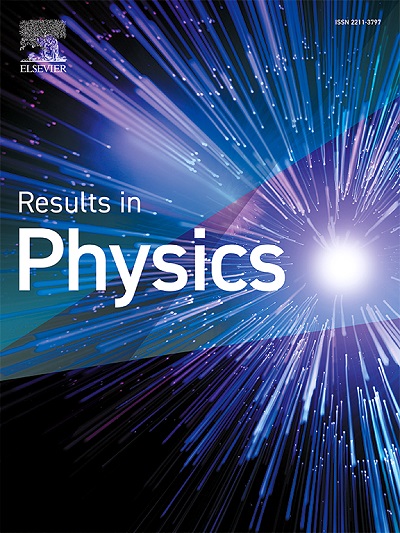基于化学动力学和对流通道壁的磁卡森流体三步放热反应的热失控和分布效应
IF 4.4
2区 物理与天体物理
Q2 MATERIALS SCIENCE, MULTIDISCIPLINARY
引用次数: 0
摘要
放热燃烧过程在热系统设计中的重要贡献怎么强调都不过分。一个涉及磁卡森流体三步反应-扩散的系统对安全管理、能源系统和化学工程具有重要意义。因此,本研究考察了热失控现象及其对重力驱动磁卡森流体三步放热反应的传播影响,考虑了沿通道的对流热分布和化学动力学。该研究的特点是由于放热积累造成的压倒性温度上升,这对自然和工业过程构成了重大挑战。探讨了卡森流体流变特性、化学反应速率、活化能和热能与磁场影响的相互作用。将卡森流体模型与非线性化学动力学相结合,建立了三步放热燃烧的理论模型。根据牛顿冷却定律,模拟了通道壁上的热对流交换。利用磁场强度、Brinkman数、Grashof数和Frank-Kamenetskii参数等无量纲项分析反应的稳定性、耗散和热分布。采用Galerkin加权残差技术求解耦合方程,对热失控发生时的流动特性和化学动力学进行适当的参数敏感性分析。主要发现表明,三步反应导致系统复杂性,其中反应中间体稳定并放大热效应取决于活化能。通道壁上的温度分布可以降低工业应用中的失控风险,并为反应条件优化提供见解。本文章由计算机程序翻译,如有差异,请以英文原文为准。
Thermal runaway and distribution effects on a three-step exothermic reaction of magneto-Casson fluid with chemical kinetics and convective channel wall
The essential contributions of exothermic combustion processes in thermal system designs cannot be overemphasized. A system involving a three-step reaction–diffusion of magneto-Casson fluids has implications for safety management, energy systems, and chemical engineering. Thus, this study examines the thermal runaway phenomenon and its propagation influences on a three-step exothermic reaction of a gravity-driven magneto-Casson fluid, considering convective heat distribution and chemical kinetics along a channel. The study is characterized by an overwhelming temperature rise due to the exothermic heat accumulation, which poses substantial challenges in natural and industrial processes. The interaction between Casson fluid rheological properties, chemical reaction rates, activation energy, and thermal energy with the magnetic field influence is explored. The theoretical model integrating the Casson fluid model is coupled with nonlinear chemical kinetics for a three-step exothermic combustion. Following Newton’s cooling law, the thermal convective exchange at the channel wall is modeled. The dimensionless terms such as the magnetic field intensity, Brinkman number, Grashof number, and Frank-Kamenetskii parameter are utilized to analyze the reaction stability, dissipation, and heat distribution. The study employs a Galerkin weighted residual technique to solve the coupled equations for appropriate parametric sensitivities analysis of the flow characteristics and chemical kinetics on the thermal runaway onset. The main findings revealed that a three-step reaction leads to system complexity, where the reaction intermediate stabilizes and amplifies thermal effects depending on the activation energy. The distribution of temperature in the channel wall provides mitigating runaway risks in industrial applications and gives insights into reaction conditions optimization.
求助全文
通过发布文献求助,成功后即可免费获取论文全文。
去求助
来源期刊

Results in Physics
MATERIALS SCIENCE, MULTIDISCIPLINARYPHYSIC-PHYSICS, MULTIDISCIPLINARY
CiteScore
8.70
自引率
9.40%
发文量
754
审稿时长
50 days
期刊介绍:
Results in Physics is an open access journal offering authors the opportunity to publish in all fundamental and interdisciplinary areas of physics, materials science, and applied physics. Papers of a theoretical, computational, and experimental nature are all welcome. Results in Physics accepts papers that are scientifically sound, technically correct and provide valuable new knowledge to the physics community. Topics such as three-dimensional flow and magnetohydrodynamics are not within the scope of Results in Physics.
Results in Physics welcomes three types of papers:
1. Full research papers
2. Microarticles: very short papers, no longer than two pages. They may consist of a single, but well-described piece of information, such as:
- Data and/or a plot plus a description
- Description of a new method or instrumentation
- Negative results
- Concept or design study
3. Letters to the Editor: Letters discussing a recent article published in Results in Physics are welcome. These are objective, constructive, or educational critiques of papers published in Results in Physics. Accepted letters will be sent to the author of the original paper for a response. Each letter and response is published together. Letters should be received within 8 weeks of the article''s publication. They should not exceed 750 words of text and 10 references.
 求助内容:
求助内容: 应助结果提醒方式:
应助结果提醒方式:


